When you hear the word “marketplace”, your mind immediately goes to Amazon. Creating a marketplace like Amazon is the goal of many entrepreneurs. But is it really that profitable and easy process? Let’s discuss what hides behind the eCommerce giant’s popularity, whether there are any alternatives to Amazon Marketplace, and how to build a similar platform.
The secret of Amazon’s success
Today, Amazon is considered to be the world’s largest online retailer. Over the last 4 years, Amazon’s annual net revenue increased by almost two times and amounted to $514 billion. Also, a forecast says, the number will exceed 700 billion by the end of this year.
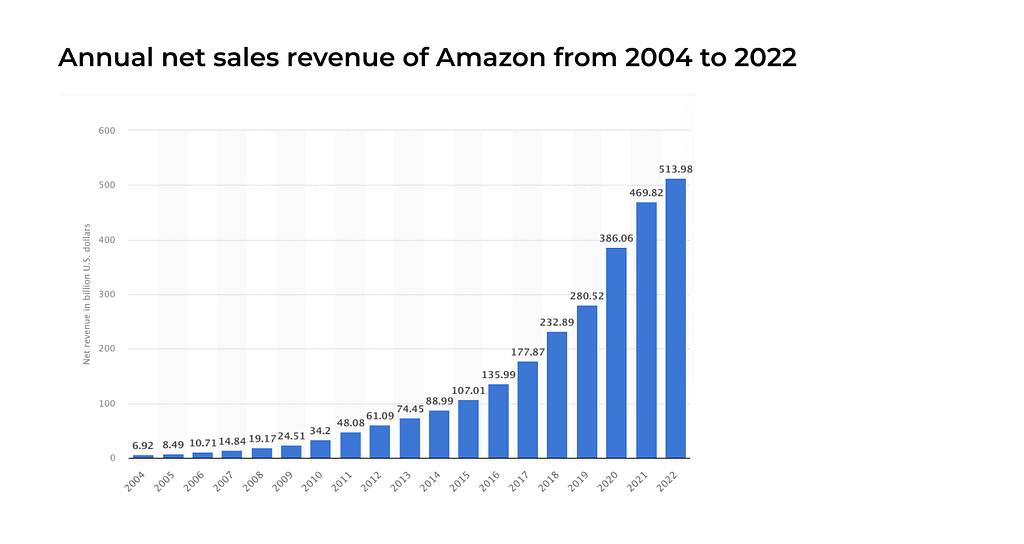
Back in 1994 in Jeff Bezos’s garage everything started as a bookshop. Today Amazon expanded as a huge marketplace with more than 300 million people visiting the platform every month. More than 2 million vendors sell on the platform.
From the very first day, Amazon follows the four core principles:
- Analyzing customer obsession
- Welcoming innovative ideas
- Improving operations
- Future-forward planning
The marketplace is focusing on customers and learning their obsession. They prioritize this over the competitors’ analysis, and customers return their appreciation. Amazon is the first to introduce the opportunity to leave feedback on the product. This innovation boosted sales significantly and won the customers’ loyalty.
No wonder why every entrepreneur dreams of starting a new company like Amazon. But how to do it correctly? Stay with us to learn more tips about core features, challenges, and costs any Amazon-like website requires.
More than a marketplace
What is the difference between Amazon and Amazon marketplace? As a summary, here’s a quick overview of the difference between Amazon and Amazon Marketplace.
What is it? Amazon.com is an ecommerce website. Anything sold directly through Amazon.com is owned by Amazon. Amazon Marketplace is a platform that allows third-party sellers to sell their products on Amazon.com. Over 12 million products are sold each year on Amazon.com. Are products new or used? Products sold on Amazon.com are always new, while third-party retailers can sell both new and used products on Amazon Marketplace. Who gets the profits? When a purchase is made through Amazon.com, Amazon alone gets the profits. When someone purchases a product through Amazon Marketplace, the third-party seller shares a portion of the profits with Amazon.
How does Amazon make money?
Amazon is the global eCommerce ecosystem providing services in online retail, cloud hosting, and digital streaming. The multivendor platform combines different monetization strategies. If you plan to create an online marketplace like Amazon, you need to analyze the business model of the platform and understand the key points.
To make a profit, a marketplace with millions of vendors implements the following revenue models:

1. Selling fees. One of the primary revenue models of Amazon Marketplace. It includes the following:
- Fees per item — commission is charged for every product sold.
- Shipping fees — commission depends on the type and category of products.
- Referral fees — paid by providers on the product sold.
- Closing fees — commission is charged for every media item sold like books or digital games.
2. Listing fees. According to this model, Amazon charges a fee for each Amazon Standard Identification Number (ASIN) which is similar to the catalog number.
3. Fulfillment fees. Amazon provides fulfillment services which include picking and packing orders, shipping, handling customer service, and returns. This costs an additional fee that is based on the weight and size of the product.
3. Advertising. Amazon also makes a profit from advertising. The marketplace allows third-party sellers to place ads on the platform.
4. Subscriptions. Amazon Prime — the paid service, providing additional benefits and giving access to streaming platforms, Amazon Music and Reading. It generates revenue using the subscription model. The standard plan is $14.99/per month.

5. Kindle. Amazon also makes money from the Kindle marketplace. Kindle is a reading device developed and sold by Amazon. The marketplace provides access to one of the biggest eBooks catalogs. Amazon gets close to 70% of the revenue generated by selling eBooks on Kindle.
Features and benefits
How to start an eCommerce business like Amazon? Do you need to have any exceptional features and follow secret approaches? In reality, everything is much simpler.
- Amazon has the widest variety of selling products. You can find everything there. Hundreds of categories and the ability to look through them conveniently are the mined gold for customers.
- Speaking of customers. Amazon makes them its top priority. Customer service on the marketplace is of the highest quality with quick delivery, simple checkout, secure payments, and a return policy.
- The checkout process is optimized making it possible to complete in one click. Such a time saver is a great feature for increasing customer loyalty.
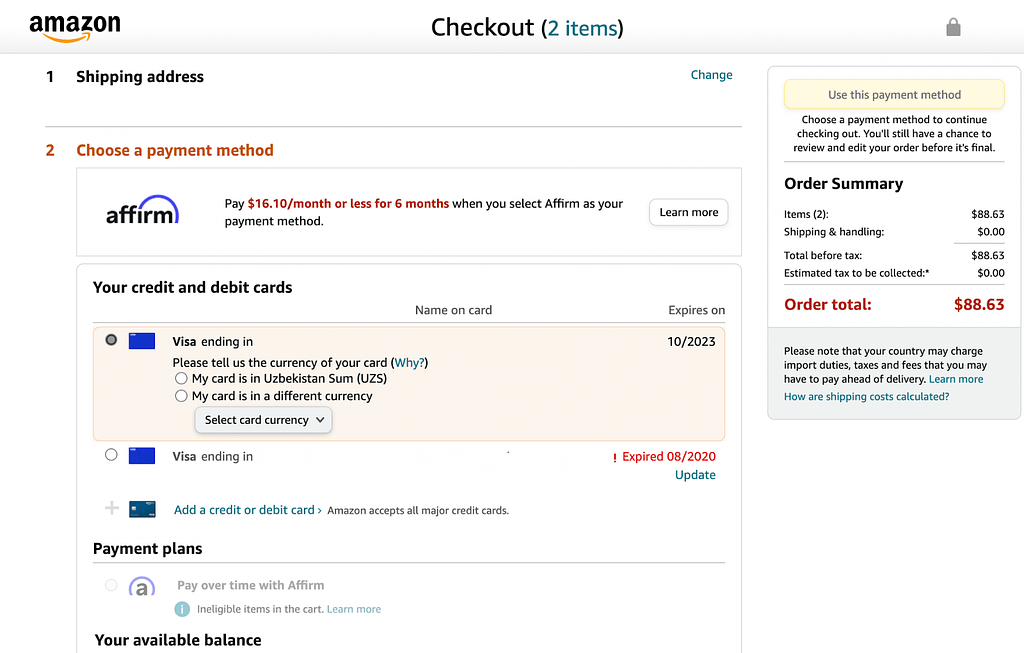
Many different benefits provided by the platform also positively impact customer loyalty. For example, Amazon Prime influences it a lot. Prime subscription activates free shipping on various items in just 2 days, promotes special offers, allows for free ebook downloads, etc.
How does Amazon attract sellers?
When you want to know how to make a multi-vendor marketplace website like Amazon, you want to learn how to attract as many sellers as the platform does.
In the beginning, Amazon was concentrating on one niche — books. There were no competitors and building a big directory and attracting sellers was not a challenge.
Today, millions of website visitors who are potential customers, attract sellers from all over the world to start a business with Amazon. What is more, the marketplace helps brands with increasing sales through different methods. For instance, vendors can promote their products on Buy with Prime page. They can reach a wider audience with co-branded social media ads managed by Amazon. All this is very appealing for brands that want to be presented in the marketplace. Sellers can also benefit from using specialized tools like a sales engagement platform or revenue engagement solution to streamline the sales process and optimize engagement with potential customers. Platforms like Conquer.io offer these sales engagement solutions, helping businesses improve outreach and enhance their overall revenue strategies, making it even more appealing for sellers to succeed in competitive marketplaces like Amazon.
How to Start a Business like Amazon?
One should understand entering the eCommerce market is like stepping into the battlefield. The competition is huge. People will always compare with Amazon-like giants. Starting with the right legal structure, such as forming an LLC, is crucial to limit your personal liability and protect your assets as you grow. As your business scales in this competitive landscape, prioritizing asset protection becomes essential for long-term sustainability. The main idea is that you are not just building a website but creating a business with many obstacles to overcome.
How to build a website like Amazon: key steps
Step 1. Discovery Phase
The Discovery phase helps to evaluate the client’s ideas. During the discovery stage, it is necessary to analyze the market and study the product’s target audience. This market analysis will bring out the major trends, challenges, threats, and opportunities of your business. In addition, a good discovery phase includes a unique value proposition (UVP) and roadmap for the future development. The UVP is the perception of the benefits that a customer gets from buying, using, or consuming a specific product or service in comparison with available alternatives.
Being ‘genuinely customer-centric’, according to Jeff Bezos’ words, their value proposition is expressed in the following benefits:
- Lowest prices
- Widest range of products
- Seamless payments
- Convenient worldwide delivery
- Valuable features like shopping in their native language, package tracking, estimating import fees, and 24/7 customer support
Step 2: Architecture Building
Before starting the development, you should define all the requirements and features of your future eСommerce platform. Marketplace architecture design can help you cope with this issue, thus saving lots of money and effort at the development stage.
According to Statista some of the most important factors that influence the purchase decision on Amazon among its buyers are:
- Fast and free shipping – 79%
- A broad selection of goods – 69%
- Loyalty program (Prime membership) – 65%
- Best pricing – 50%
- Easy return process – 43%
Step 3: UX Concept and Required Technologies
Amazon is excelling in the marketplace industry because of its UX/UI and technical stacks.
After the team determines all the core features (that were chosen during the architecture building stage) it becomes possible to choose technologies that would work best for its implementation. The technology stack required for Amazon-like website development may vary, since each development team may apply one or the other programming tool to achieve a specific goal. The tech stack choice usually depends on the budget, time, and complexity of features.
As for the design, it is especially essential for eCommerce websites. Users should navigate through your site quickly and intuitively, so UI and UX must be created with well-thought-out behavior models.
Making a website like Amazon, pay special attention to the design of your future project, it should correspond to modern standards:
- The homepage is compact and attractive
- Listing pages are simple with multiple filtering and sorting options
- Product pages are informative with separate blocks of ratings and reviews
We’d like to highlight Amazon’s vibrant design which is customer-centric. Entering the home page of the platform you can see many offers that are categorized enabling convenient navigation.

Filtering options make it easy to find any item you want allowing you to specify each and every detail of the product. Product card descriptions are also very informative, with lots of interesting and useful visual content.

Consider the following for your design when building a website like Amazon:
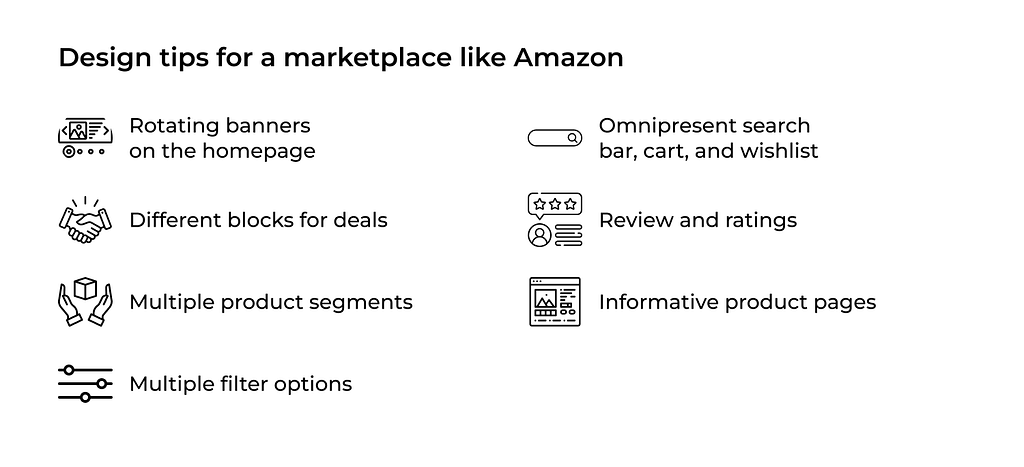
Step 4: MVP Development
The most complicated stage is initiated. This stage includes back-end and front-end development, UI/UX design, and testing. This process may take from 2 months to one year and even more. The time frame depends on the complexity of content and the initial scale of a website.
The key features of an eСommerce marketplace like Amazon
How to make a marketplace like Amazon when you do not have the understanding of what defines the great online shopping experience? This will give you ideas for a more valuable list of the crucial features for the project.
There are two types of users on Amazon marketplace: vendors and buyers. For each group you need to think of a specific set of features.
Features for vendors
1. Registration and authorization. To start selling on the marketplace, vendors should be able to register and verify their personal information and banking details. The process should be easy and the registration form should include all the necessary details.
2. Inventory management. To control the availability of products, sellers need to monitor and take records of all items leaving and arriving at the warehouse.
3. Order management. Processing and tracking orders are important for vendors. This eliminates the necessity to manually record every order, which saves time significantly. You can integrate your favorite ERP system to automate the order management process and synchronize with existing accounting systems.
4. Analytics and reports. Sellers need to collect insights about customers’ behavior, track their sales, analyze trends, and get statistics about their audience. Detailed analytics and reports allow identifying mistakes and improving selling tactics. For instance, vendors can generate reports for sales on the specific period.
5. Admin panel. An admin panel allows marketers to manage content: upload files (images, video ads, product overviews, etc.), add, edit, and delete information. Furthermore, it allows for assigning data access permissions, adding and blocking users. You can also enable vendors to reply to user comments and testimonials via an administrator panel.
Features for consumers
1. Registration and authorization. Registration and authorization are must-have features of an eCommerce marketplace platform. When building a marketplace, it is crucial to provide users with the possibility to sign up in any convenient way, including mail, phone number, and social media. With the view of enforcing data security, it is important to enable two-factor authentication.
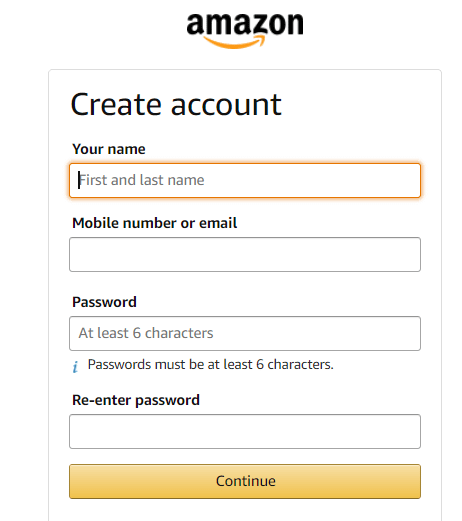
2. User profile. A profile contains basic customer information, involving name, age, contacts, as well as payment, billing, and shipping details. If you decide to implement a “Wishlist” feature to allow users to add products to the list of favorites, you should provide the possibility to view it from a personal account.
3. Catalog of goods. This page contains product listings, images, and descriptions, so that customers can take a closer look at goods they would like to buy.
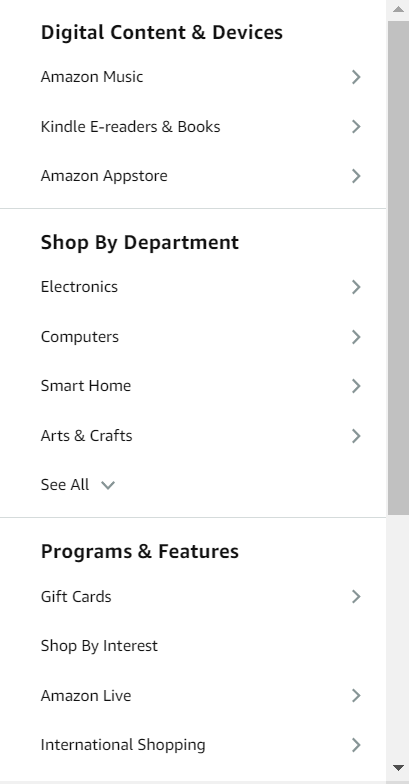
4. Search. When building an online marketplace like Amazon, it is essential to enable search for products and vendors across numerous filters and categories. Designers should organize content in such a way that users can easily find everything they may ever need. For the purpose of improving customer satisfaction, you should integrate an autocomplete feature to save the time of users.
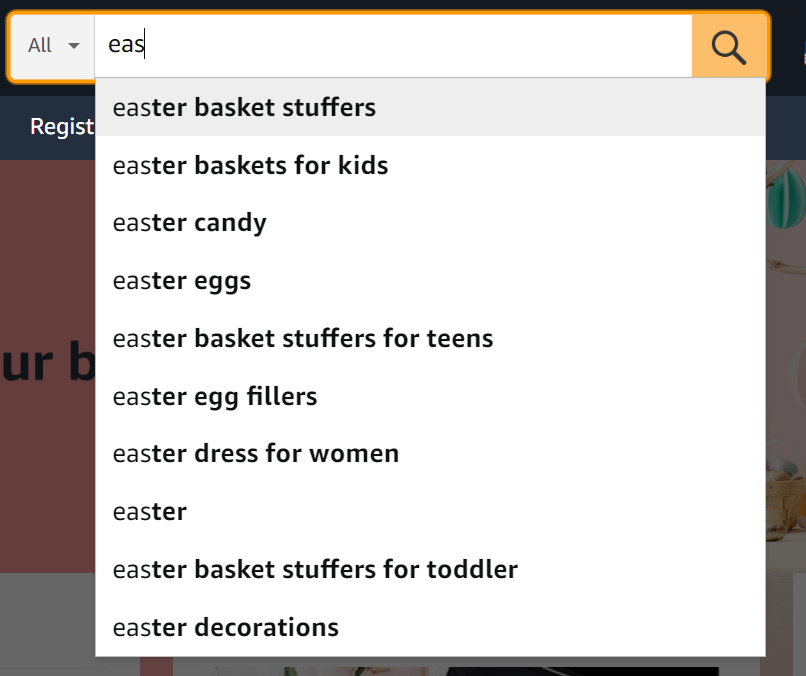
5. Shopping cart. A shopping cart is among the most important features of an online marketplace that allows users to make purchases from different vendors. When developing an eCommerce marketplace platform, you should set up automated calculations of the total price of products while enabling customers to change the number and quantity of goods. In addition, the cart has to provide information about available payment methods, delivery time and cost.
6. Reviews and ratings. By implementing reviews and ratings, you will increase credibility to an eCommerce marketplace and vendors. Thanks to this feature, consumers can make more informed purchasing decisions based on user feedback. Therefore, this enables sellers to decrease product return rates and improve client service.
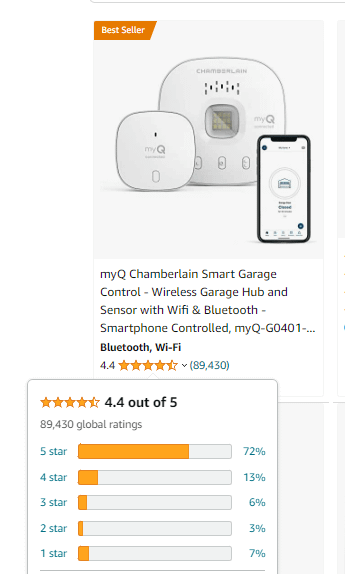
7. Checkout. When building an eCommerce marketplace like Amazon, you should create a checkout page. Online consumers should be able to confirm that they have correctly filled out the required information, involving payment method, delivery and shipping details, order comments. To ensure a seamless shopping experience, it is important to minimize the necessary fields, add clear call-to-actions, as well as allow users to make purchases without registration.
8. Online payments. In order to increase customer loyalty and increase sales, it is essential to provide users with a variety of payment methods. For this purpose, you can integrate an eCommerce marketplace with a payment gateway.
How much does it cost to build a marketplace like Amazon?
Amazon in its core is a multivendor online marketplace and its cost will depend on the features set. To create an exact copy of Amazon may cost from $200,000 – 300,000. But the website was not created in a day. You may start with an MVP (Minimum Viable Product) and then gradually add the new features.
But to reduce the costs, we can propose using a ready solution. Many features are standard for marketplaces and do not require developing from zero with using eCommerce platforms.
Furthermore, Amazon launched more than 25 years ago, so it won’t be easy to build a similar marketplace and repeat its success.
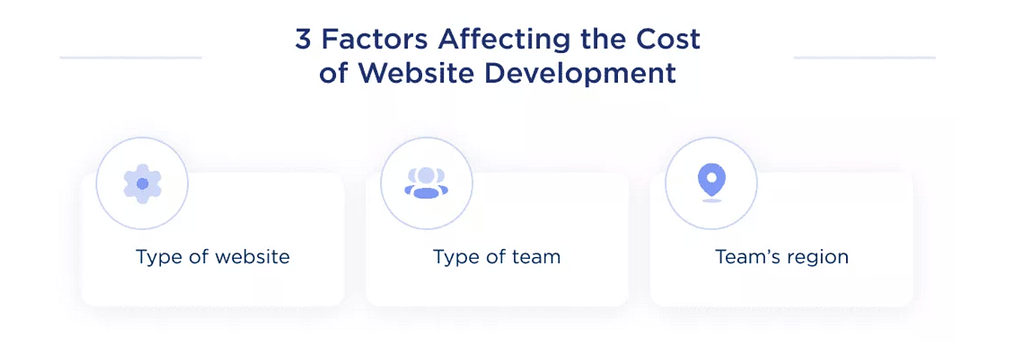
Final thoughts
Having read this article, you have a more clear conception of steps on how to build a website like Amazon. It is not an easy task to compete with Amazon, so you will need to invest many resources in your website development to make it stand out. However, this article answers the most common questions that come up about building a website like Amazon.com.
Interested in building your own marketplace? It is just a click away! We would be glad to become a technical partner for you and help you realize all of your most ambitious plans with our feature-rich, mobile friendly, engaging eСommerce solutions.
About Author
This article was prepared with the help of Eugenia Fokina, eCommerce consultant with more than five years of experience in CS-Cart platform consulting. During her work, Eugenia has accumulated a huge experience in eCommerce platforms, their best practices, and features. She decided to share her insights via this post.

